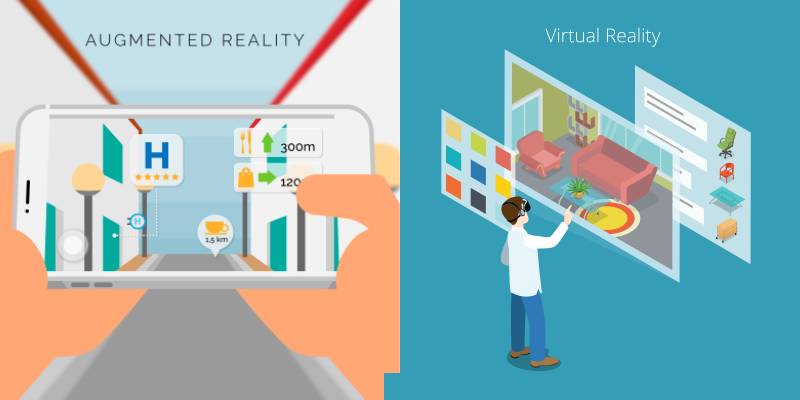Introduction:
Augmented Reality (AR) and Virtual Reality (VR) are two of the most significant technological advancements of the last decade, and their impact on the industry is truly transformative. AR and VR technologies allow individuals to immerse themselves in a completely different reality, creating new opportunities for businesses to enhance their products, services, and customer experiences. From healthcare to education, entertainment to retail, AR and VR are revolutionizing how businesses operate and interact with their customers. This article explores the impact of AR and VR technologies on various industries and their potential to transform the future of business.

Augmented Reality (AR):
AR technology overlays digital elements onto the real world, enhancing and enriching our experience of it. The technology works by using a camera to capture real-world images and then overlaying them with digital content, such as images, videos, or 3D models. AR has the potential to transform several industries, including healthcare, education, and retail.
Healthcare:
AR technology has the potential to revolutionize the healthcare industry. Medical professionals can use AR to enhance their diagnostic capabilities by overlaying digital images of the human body onto the real world. AR can also be used to train medical students, allowing them to visualize and practice procedures on virtual patients.
Education:
AR technology can transform the way students learn by providing an interactive and immersive learning experience. For example, AR can be used to create virtual field trips, allowing students to visit different parts of the world and experience historical events firsthand. AR can also be used to provide students with visual aids, such as 3D models, that can help them better understand complex concepts.
Retail:
AR technology has the potential to transform the retail industry by enhancing the customer experience. AR can be used to create virtual showrooms, allowing customers to visualize how products would look in their homes. AR can also be used to create interactive displays that provide customers with additional information about products.
Virtual Reality (VR):
VR technology creates an entirely virtual environment that users can immerse themselves in. The technology works by using a headset to display digital content in front of the user's eyes, creating the illusion of a different reality. VR has the potential to transform several industries, including gaming, entertainment, and tourism.
Gaming:
VR technology has already transformed the gaming industry, providing gamers with a completely immersive gaming experience. VR allows gamers to step into a virtual world, where they can interact with the environment and other players in real-time. VR also allows gamers to experience a level of realism that was previously impossible with traditional gaming technology.
Entertainment:
VR technology has the potential to transform the entertainment industry by providing viewers with a completely immersive experience. For example, VR can be used to create virtual concerts, allowing viewers to experience live music in a completely new way. VR can also be used to create virtual reality movies, providing viewers with a truly unique and immersive cinematic experience.
Tourism:
VR technology can transform the tourism industry by providing travelers with a virtual preview of their destination. VR can be used to create virtual tours of popular destinations, allowing travelers to experience different parts of the world before they even leave their homes. VR can also be used to provide travelers with a 360-degree view of popular attractions, giving them a more immersive and interactive experience.
Conclusion:
AR and VR technologies have the potential to transform several industries, providing businesses with new opportunities to enhance their products, services, and customer experiences. From healthcare to education, entertainment to retail, AR and VR are revolutionizing how businesses operate and interact with their customers. As technology continues to evolve, the possibilities for AR and VR are endless, and we can expect to see even more innovative and transformative applications in the future.


Comments (0)